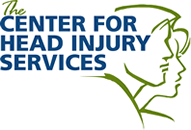
If you are over 70 and 1/2, you may be able to take advantage of a Qualified Charitable Distribution.
UPDATED FOR 2018
The Qualified Charitable Distribution (also known as a Charitable IRA Rollover) is is a great strategy for seniors to reduce their taxable income under the new tax code.
What is a Qualified Charitable Distribution (or QCD)? If you’re 70 and 1/2 or older, you’re required to make required minimum distributions (RMDs) from your Individual Retirement Account (IRA.) Even if you don’t need the money, you have to take it out of your retirement account and you have to pay tax on it. If you don’t, the penalties are even worse than any tax you’d have to pay. Additionally, many seniors don’t get the benefit of claiming their charitable donations on their income tax returns because they don’t have enough other things to deduct like mortgage interest. With the new, higher standard deduction for 2018, even fewer seniors will be able to itemize their deductions.
The Qualified Charitable Distribution helps with this problem by allowing you to take money out of your IRA and make a direct contribution to a charity. The distribution counts towards your RMD and it’s tax free to you because it went to the charity. That’s a win/win situation!
Another advantage to the QCD is that the income from the distribution never shows up as income on the face of your tax return. This is really helpful for people who may be able to claim other deductions or benefits based on having a lower Adjusted Gross Income (or AGI.) For example: The taxability of your Social Security income is based upon your AGI, so for some people, a lower AGI could reduce how much of their Social Security income gets taxed.
Can you make a contribution for more than your RMD? Yes you can. You can actually make a charitable distribution of up to $100,000 from your IRA with no federal income tax impact. $100,000 – that wasn’t a typo. If you’re in a financial position to make a donation like this, that would be $100,000 to a charity of your choice with no limitations as to its deductibility because it’s part of an IRA charitable rollover.
Can you make a QCD if you’re less than 70 and 1/2 years old? No, I’m afraid not. You must be at least 70 and 1/2 at the time you make the distribution.
If you’re interested in making a Qualified Charitable Distribution, talk it over with your financial advisor and your charity. You’ll want to make sure that it’s done correctly and you’ll want to keep good records in case there’s ever any question about your RMDs.
Can I still take a charitable deduction on my tax return for my QCD? No, the QCD will be exempt from tax so you can’t claim it as an additional deduction.
The Qualified Charitable Deduction is one of the best ways for seniors to reduce their tax liability under the new tax code. If charitable donations are something you do, then definitely check out the QCD.


